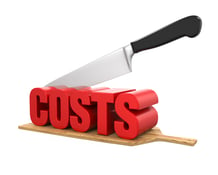This winter it’s worth reflecting on how outdoor dining has changed since 2020. In cities and small towns across America, everyone decided almost in tandem that no amount of wind or snow or plunging temperatures would keep us from sitting with friends to enjoy a meal and a stiff drink, even if we weren’t able to do so indoors. So everyone bundled up and got to see their breath during brunch.
What soon followed, naturally, was a nationwide run on heaters. The phrase “kotasu table” trended, as we looked abroad to see how other countries had cracked the question of how to pretend winter wasn’t real. Taking a note perhaps from “King of the Hill,” restaurant owners dived into propane and propane accessories. They cost a pretty penny to heat a whole patio, but stimulus money was flowing, and closing for the season wasn’t an option, so outdoor heaters it was.
Then 2022 hit and things got even weirder. You want to price propane for this coming cold season? Well, get ready to factor in the effects of inflation, sanctions, embargoes, and the Russian invasion of Ukraine. Gasoline hit record highs, and then fell to more humane levels. But diesel is climbing. And the refining of crude oil — of which propane is a byproduct, unlike natural gas — still faces a lot of political risk right now. It can seem like you need an economist just to figure out whether you’ll be able to keep your back patio open for college basketball season.
Well, we went and got nerdy for you. After consulting bona fide world experts on propane, we’re here to break down what the season has in store for you, and offer some best practices for smart propane shopping in any season.
What is the price of propane doing right now?
If your main source of outdoor heat uses propane (as opposed to natural gas, electric, battery-powered, or solar), you might look at the ghastly headlines of the past year and worry that your options are letting your customers brave arctic blasts, or burning through your wallet.
Fortunately for everyone’s sanity, global gas price trends don’t have as much sway over domestic retail propane prices as you might guess.
For starters, the United States is the biggest propane producer and exporter in the world. Demand for propane goes up in winter, when people use it for home heating. But production stays pretty steady, and overall, the U.S. burns less propane than it makes. This means we export it onto the global market. Propane as a rule moves easily between various regions, making wholesale prices from country to country mostly a matter of logistics.
“Generally the difference in price is the cost of transportation,” said Warren Wilczewski, a senior technical advisor at the U.S. Energy Information Administration. “How much does it cost to take a barrel of propane, load it onto a ship, and sail it halfway across the world? That’s the difference.”
Moving the gas turns out to be key. Before cylinders can fuel your heaters, they need to be filled, stored, and transported (via trucks that use diesel, driven by truckers who are at premium right now). We haven’t even touched on pipeline tariffs.
Bottom line, propane production is tied to the crude oil market, which is subject to demand and logistical kinks. “Different sectors are driven by different factors,” said Kristen Mueller, a Principal at Argus Media, which tracks gas prices. “Demand will impact wholesale prices, and how the price is built up along the supply chain.”
Once you shake it all out you’ll find that while domestic and international propane prices are sitting pretty below a buck a gallon, your local big box retailer probably will charge you upwards of $3.50 per gallon. The 20-pound cylinder you get holds 4.6 gallons, and will keep a fire pit roaring for anywhere from about two hours to nine hours, depending on its efficiency ratings and how high you have it cranked. That’s definitely a bite into any profits you’d see for cold-weather dining. But at least it’s not going to be terribly different from the prices you might have paid recently.
So is it cost-effective to run a propane heater in cold weather?
This is a case where your mileage is going to vary quite a bit, depending on your clientele, your equipment, your local ordinances, and of course, your weather. To calculate whether heaters are worth your while, start by pricing the heaters themselves. How much is it going to set them up, how many tanks do you require, and how much money can you generate with the seating they service?
Maybe most importantly, you have to decide whether heaters solve your problems in the first place.
“If your patio is begging to be used more often and the climate is accommodating enough, heaters can absolutely help boost your revenue,” said Zach Mack, owner of the outdoor restaurant Taco Vista, on New York City’s summer-friendly Governor’s Island. “But don't be deluded into thinking that customers will be willing to brave a blizzard in your outdoor area because there's a flicker of warmth.”
Another thing to consider? Simply storing all those bulky tanks of gas can be prohibitive, if your restaurant has a small footprint.
“Storage is one of the biggest pain points that we’ve seen from restaurants,” said Lynsey Hiro, the product manager at Cynch, an app-based propane tank delivery service by Amerigas. If you’re a restaurant owner with a small space, you might consider enlisting a propane delivery company that has the flexibility to come to your restaurant and trade out used canisters every day or two.
A company like Cynch can give you a quote based on your individual requirements. The price of the propane is built into that quote along with everything else that goes into getting cylinders back and forth from where they need to be. This is Mack’s preferred method. “We've enlisted the help of a delivery service that can drop us off all the 20-pound tanks we need to keep our grills and heaters running," he said. "These services can be time-efficient and cost-effective in that they rarely change their prices and are reliable.”
The propane market is a vast one, but not impenetrable. You, as a restaurant or bar owner, are going to be mostly insulated from wild price swings so long as your local retailer has a steady supply locked down. “In my experience, prices don't fluctuate over time, but they do change from place to place — such as a large city versus a more rural area — but even then it's not usually a huge gulf in difference,” Mack said. “The best way to know if you're getting a deal or not is to walk into your nearest Lowe's or Home Depot to see what a 20-pound tank is, and compare it to the delivery service, keeping deposit in mind.”
In short, the best way to figure out what your propane is going to cost this winter is to shop around locally — secure in the knowledge that last-mile prices more than overseas wars will probably determine whether you can make your patio cozy in a given year.
[Photo by Revolver Creative Company on Unsplash]





